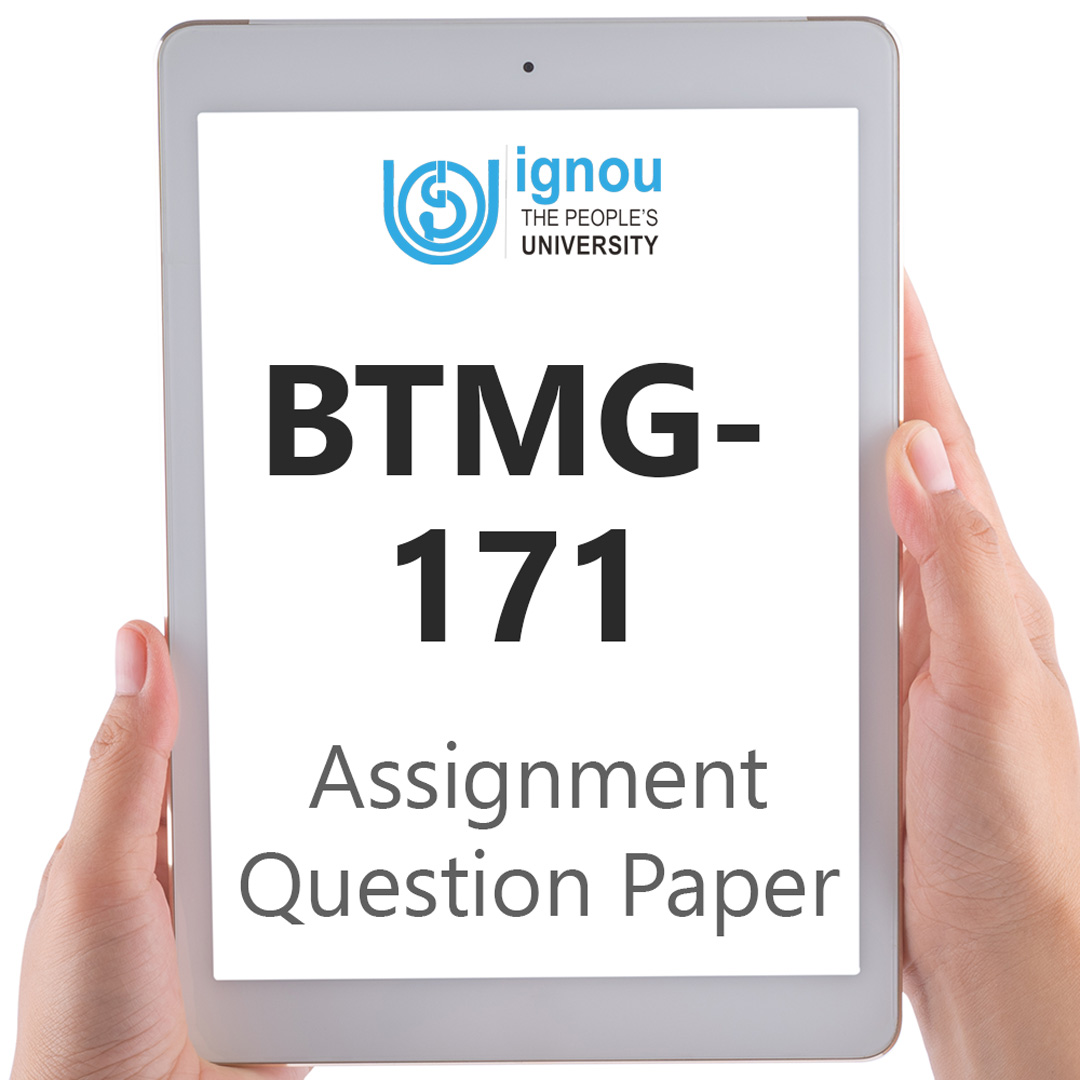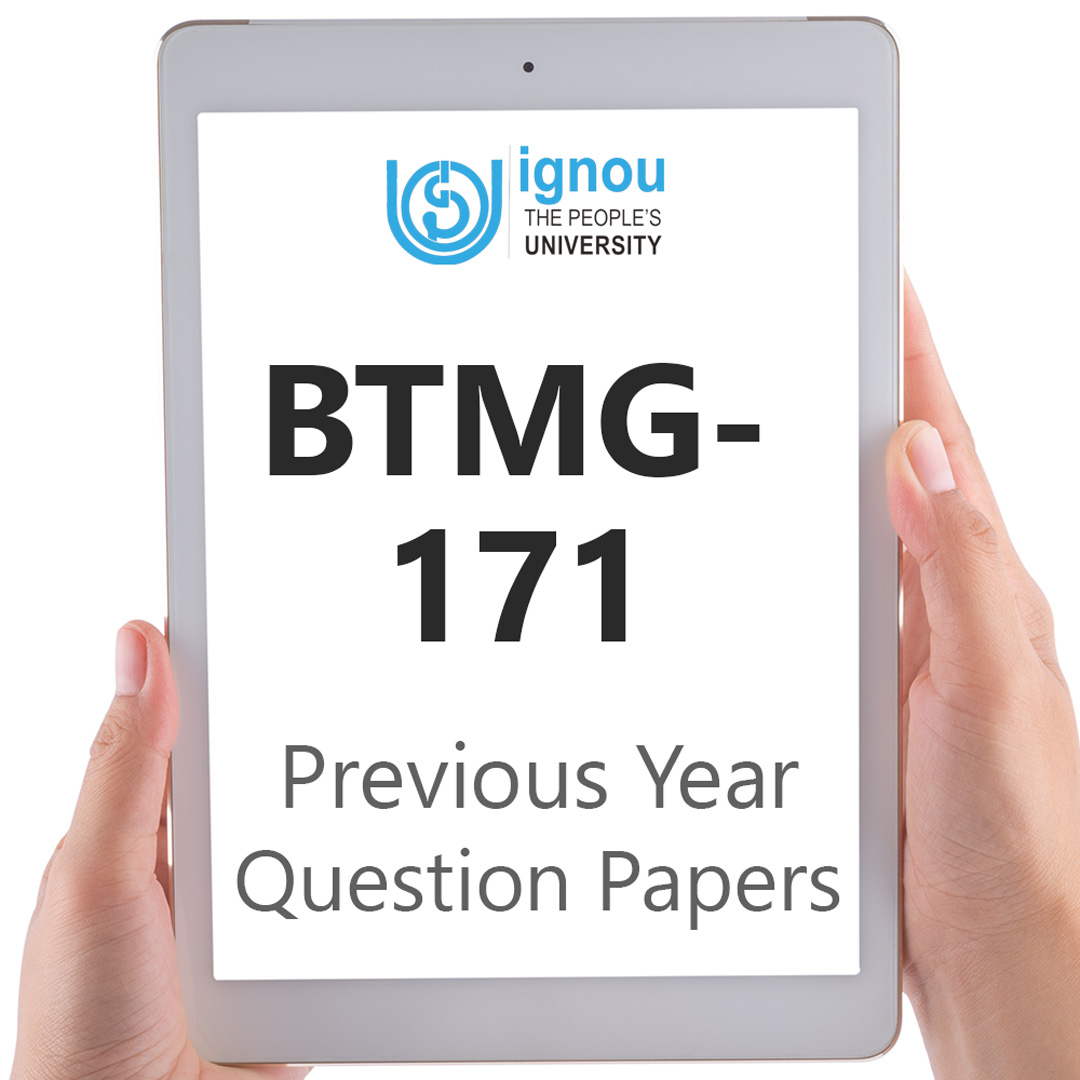If you are looking for BTMG-171 IGNOU Solved Assignment solution for the subject Culture in Indian Subcontinent I, you have come to the right place. BTMG-171 solution on this page applies to 2023-24 session students studying in BAVTM courses of IGNOU.
BTMG-171 Solved Assignment Solution by Gyaniversity
Assignment Code: BTMG-171/TMA/2023-24
Course Code: BTMG-171
Assignment Name: Culture in Indian Subcontinent-I
Year: 2023-2024
Verification Status: Verified by Professor
Section A
Answer the following in about 500 words each.
Q1) Discuss the position and role of women in the cultural tradition of India.
Ans) The position and role of women in the cultural traditions of India are diverse and complex, reflecting a blend of historical, social, and religious influences. Throughout the country's rich history, women have held multifaceted roles, ranging from revered goddesses to facing challenges rooted in traditional norms.
Historical Perspective:
In ancient India, women played significant roles in various spheres of life. The Vedic period saw the emergence of female sages and scholars, challenging the notion of gender-based limitations. However, over time, societal norms became more patriarchal, influencing the status of women.
Religious Influence:
Indian culture is deeply intertwined with religion, and the portrayal of women in religious texts has shaped societal attitudes. The reverence for goddesses like Saraswati, Lakshmi, and Durga underscores the divine feminine. However, the interpretation and application of religious doctrines have often led to restrictive practices, impacting the lives of women.
Family Structure and Roles:
The family is a fundamental unit in Indian culture, and women traditionally hold pivotal roles within it. The concept of "sati" (widow self-immolation) in ancient times, though not widespread, reflects extreme patriarchal norms. Over time, societal reformers like Raja Ram Mohan Roy worked to abolish such practices, advocating for women's rights.
Marriage and Dowry System:
Marriage holds immense cultural significance in India, and the institution has been marked by the dowry system, where the bride's family provides gifts to the groom's family. Despite legal efforts to curb dowry-related issues, they persist in some regions, impacting the lives of women and reinforcing gender inequalities.
Education and Empowerment:
While the literacy rate among women has improved, educational disparities persist, especially in rural areas. Efforts to promote girls' education have gained momentum, aiming to empower women and challenge stereotypes. Women's empowerment has become a central theme in cultural discourse, emphasizing economic independence and equal opportunities.
Women in the Workforce:
The workforce in India has seen an increase in women's participation, but challenges like gender pay gaps and workplace discrimination persist. Traditional gender roles can influence occupational choices, with women often expected to prioritize family over careers. Initiatives promoting gender diversity and inclusivity aim to challenge these norms.
Legal Reforms:
The legal system in India has undergone substantial changes in order to improve the rights of women. Among the most noteworthy examples are the Hindu Succession Act, the Maternity Benefit Act, and the Protection of Women from Domestic Violence Act. Nevertheless, the effective execution of these regulations is sometimes hampered by gaps in implementation as well as attitudes held by society more generally.
Cultural Activism:
There has been a significant contribution made by cultural activists and feminist movements in India to the fight against stereotypes and the promotion of women's rights. There have been many different venues that have contributed to the altering of cultural narratives around women. These platforms include literature, cinema, and grassroots activities.
Challenges and Progress:
Despite progress, challenges such as gender-based violence, female infanticide, and limited representation in leadership roles persist. Efforts to challenge these norms are ongoing, with campaigns like "Beti Bachao, Beti Padhao" (Save the Girl Child, Educate the Girl Child) aiming to address issues like female foeticide.
Q2) Explain the differences between ancient Indian and Islamic styles of architecture. Give suitable examples.
Ans) The differences between ancient Indian and Islamic styles of architecture are:
Section B
Answer the following in about 250 words each.
Q3) How the Indian culture evolved over centuries of history?
Ans) Indian culture has evolved over centuries, shaped by a myriad of historical, social, religious, and political influences. The ancient Indus Valley Civilization (circa 3300–1300 BCE) marked the early foundations with advanced urban planning and a system of writing. The Vedic period (1500–500 BCE) laid the groundwork for Hinduism, shaping societal norms and rituals.
The Maurya (322–185 BCE) and Gupta (320–550 CE) empires witnessed advancements in art, literature, and philosophy, contributing to classical Indian culture. The spread of Buddhism and Jainism further influenced societal values.
Islamic invasions from the 7th century onwards introduced new architectural styles, language, and culinary traditions. The Mughal era (1526–1857) witnessed a synthesis of Persian and Indian cultures, exemplified by monuments like the Taj Mahal.
The British colonial rule, which lasted from 1757 until 1947, had a long-lasting impact on the administration, social practises, and educational systems. The fight for independence that took place at the beginning of the 20th century helped to cultivate a feeling of national identity.
Following the country's attainment of independence, India adopted democratic and secular principles, hence promoting linguistic, religious, and cultural diversity. The late 20th century saw the advent of globalisation, which resulted in increased exposure to international influences, which had an effect on lifestyle, technology, and popular culture.
Indian culture has become a dynamic and resilient tapestry as a result of the continual interaction between indigenous roots, external influences, and socio-political changes. This is a reflection of the country's rich past as well as its ability to adapt to a variety of influences.
Q4) Write a brief note on “Anthropological survey of India’s data”.
Ans) The Anthropological Survey of India (ASI) is a prestigious research institute that falls under the Ministry of Culture of the Government of India. Its primary mission is to investigate the various ethnic, linguistic, and cultural communities that exist inside the country. The organisation was founded in 1945 with the primary purpose of doing anthropological study, documenting indigenous traditions, and promoting understanding among various populations.
The Asian Social Institute (ASI) is responsible for the collection and analysis of data pertaining to different aspects of India's communities, such as their social organisation, kinship structures, economic activities, religious views, and variations in language. A thorough understanding of the cultural mosaic that constitutes India can be achieved through the collection of data through ethnographic fieldwork, questionnaires, and research conducted in archives.
The activity of the organisation involves both tribal and non-tribal groups, with the goal of highlighting the significance of maintaining and appreciating the country's diverse cultural heritage. ASI's research outputs include articles, journals, and databases that are useful tools for academics, policymakers, and anyone else interested in the cultural variety of India. These materials are available to those who are interested in India.
The Anthropological Survey of India plays a pivotal role in fostering cultural awareness, promoting social cohesion, and contributing to the larger academic discourse on India's ethnography and anthropology. This is accomplished through the anthropological research and data collection efforts that it undertakes.
Q5) What are the achievements of Indian Cinema?
Ans) Indian cinema, often referred to as Bollywood, has achieved remarkable milestones, contributing significantly to global film culture.
Diverse Genres: Indian cinema encompasses a wide range of genres, from epic dramas and historical films to musicals and socially relevant narratives. This diversity caters to a vast and varied audience.
Global Recognition: Indian films have gained international acclaim, with filmmakers and actors receiving awards at major film festivals. Films like "Mother India," "Lagaan," and "Slumdog Millionaire" have garnered global recognition.
Cinematic Innovation: The industry has seen innovative storytelling techniques, cinematography, and special effects. Movies like "Baahubali" set new standards for visual grandeur and special effects in Indian cinema.
Cultural Impact: Indian cinema reflects the cultural ethos of the country, influencing fashion, music, and social trends. Iconic dialogues, characters, and songs often become embedded in popular culture.
Commercial Success: Indian films have achieved significant commercial success, both domestically and internationally. The industry produces a large number of films annually, contributing substantially to the global film market.
Global Reach: Indian films are watched and appreciated by audiences worldwide, contributing to the soft power and cultural diplomacy of the country. The diaspora plays a crucial role in the global dissemination of Indian cinema.
Artistic Excellence: Acclaimed directors such as Satyajit Ray, Ritwik Ghatak, and more recently, filmmakers like Anurag Kashyap and Vishal Bhardwaj, have brought artistic excellence to Indian cinema, exploring complex themes, and pushing creative boundaries.
Music and Dance: Indian films are known for their vibrant music and dance sequences. The industry has produced legendary composers and playback singers, making the music an integral part of the cinematic experience.
Evolution of Parallel Cinema: Alongside mainstream cinema, the growth of parallel cinema has addressed social issues, offering a more realistic and thought-provoking portrayal of Indian society. Films like "Pather Panchali" and "Aandhi" exemplify this genre.
Technological Advancements: The Indian film industry has embraced technological advancements, from the advent of colour and sound to the use of CGI and advanced post-production techniques.
Section C
Answer the following in about 100 words each.
Q6) What is religious tolerance?
Ans) Religious tolerance is the acceptance, respect, and coexistence of diverse religious beliefs and practices within a society. It involves acknowledging and accommodating the right of individuals and communities to hold different religious views without discrimination or persecution. A tolerant society promotes freedom of worship, encourages dialogue among different faiths, and fosters an environment where individuals can peacefully follow and express their religious convictions. Religious tolerance is a fundamental principle in pluralistic societies, contributing to social harmony and the protection of individual rights and freedoms.
Q7) What is “Cults”?
Ans) "Cults" typically refer to groups or movements with unorthodox beliefs, often led by charismatic leaders who demand unquestioning loyalty. Cults may exhibit controlling behaviour, isolating members from mainstream society and manipulating their thoughts and actions. Characteristics often include a centralized authority, indoctrination, and isolation from friends and family. While some groups are relatively harmless, others can pose serious risks to members' well-being. The term "cult" is often used pejoratively, and discussions around cults involve complex sociological, psychological, and ethical considerations, highlighting the need for careful analysis and understanding of the specific dynamics involved.
Q8) What is “Viharas”?
Ans) "Viharas" are Buddhist monastic residences or dwellings, serving as places for Buddhist monks and nuns to reside, meditate, and study. In Buddhism, particularly in the Theravada tradition, viharas are essential institutions for monastic life. Viharas often include meditation halls, living quarters, and communal areas for religious activities. They play a crucial role in fostering a sense of community among monks and providing a conducive environment for spiritual practice. Historically, viharas were centres of learning, where Buddhist scriptures were studied and disseminated. The term is commonly associated with Buddhist monastic complexes found in regions influenced by Buddhist traditions, such as India and Southeast Asia.
Q9) What is “Calligraphy”?
Ans)"Calligraphy" is the art of beautiful and expressive handwriting, often characterized by skilled and artistic penmanship. It involves creating aesthetically pleasing and harmonious letterforms through precise and deliberate strokes. Calligraphy is practiced in various cultures and scripts worldwide, including Arabic, Chinese, Japanese, and Western scripts like Gothic and Italic. It serves both practical and artistic purposes, such as creating decorative documents, manuscripts, or artistic compositions. Calligraphers use specialized pens, brushes, or other instruments to achieve a wide range of styles, from traditional and formal scripts to more contemporary and experimental designs.
Q10) What do you mean by “Persian Architecture”?
Ans) "Persian architecture" refers to the architectural styles and traditions that have emerged in the historical region of Persia, now modern-day Iran. It encompasses a rich and diverse heritage, with notable features such as intricate tilework, domes, and courtyards. Persian architecture has evolved over millennia, influenced by various cultural and historical factors, including Zoroastrian, Islamic, and pre-Islamic Persian elements. Prominent examples include the ancient city of Persepolis, with its grand palaces, and the Islamic-era structures like the Imam Mosque in Isfahan. Persian architecture reflects a synthesis of artistic, religious, and cultural influences, contributing to the region's unique and enduring architectural identity.







